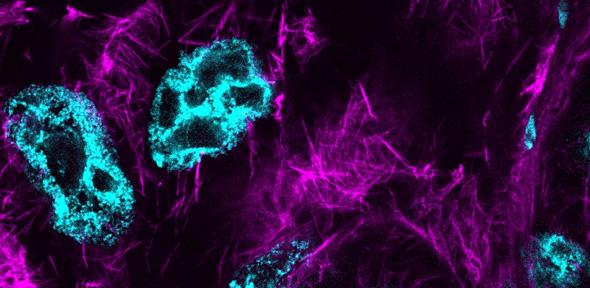Clik here to view.

The humble fruit fly is being put to an unusual use in sub-Saharan Africa: it’s being used as bait. Its intended lure? It’s hoped that the tiny creature, whose scientific name is Drosophila melanogaster, can stop the exodus of researchers from Africa.
At the moment most of the biomedical research being done in African laboratories is performed using rats. Now a project called DrosAfrica is underway to promote the use of the fruit fly as a model organism for research into human diseases.
There are several reasons for this. Firstly, rats are far more expensive to keep than fruit flies. As an affordable alternative, the fruit fly requires fewer resources to maintain and not as much expensive preparation for experiments.
Also, as a model system, Drosophila enables researchers to perform sophisticated genetics, live imaging, genome-wide analysis and other state-of-the-art approaches. Drosophila research has identified thousands of genes with human equivalents. This has provided key insights into cancer biology, pathology, neurobiology and immunology.
Drosophila is a prime model organism with tens of thousands of researchers working on every aspect of their biology. This work is aided by electronic open resources such as Flybase and stock centres like the one in Bloomington, Indiana in the US. The centre will send Drosophila to any lab in the world for the cost of shipping. These stock centres are funded by governmental grants enabling 100 000s flies to be kept alive in warehouses.
And entire research unit has been built with a focus on understanding a specific aspect of the fly. The most famous is called Janelia Farm, founded by the Howard Hughes Medical Institute in the US.
A bigger agenda
The project that’s using fruit flies as bait for scientists is known as DrosAfrica. It wants to drive the paradigm shift from rats to flies as experimental organisms. To do this, project leaders have organised workshops to share fruit fly techniques with universities and research institutes across sub Saharan Africa.
But there’s more to the work than merely extolling the virtues of fruit flies.
We also try to provide basic equipment such as dissecting microscopes, buffers, slides and antibodies for labelling proteins to facilitate the creation of local research communities. Such strong communities will ultimately be able to provide PhD programmes and research opportunities for African researchers. This will mean students don’t automatically feel they have to emigrate when seeking research opportunities.
Powerful local research programmes will also help to place the continent in the spotlight of international research. This could ultimately lead to a return of expatriates with a strong scientific background.
Activities organised by DrosAfrica: Past and Future
During the last three years, DrosAfrica has organised three workshops at the Institute of Biomedical Research Kampala International University-Western Campus, Uganda. Two focused exclusively on the use of Drosophila for biomedical research. The other concentrated on image and data analysis techniques.
Clik here to view.

The workshops' participants came from sub-Saharan Africa and included Nigerians, Kenyans, Ugandans and a delegate from South Sudan. They were able to work on several common projects and then networked after the workshops using information and resources on a dedicated website. These interactions planted the seed for developing an African Drosophila research community. At this institute, we’ve been lucky to build on the work that the non-profit organisation Trend has already done. Their team of volunteer scientists equipped the institute’s lab and introduced insect research models to the local scientists.
In 2016 the project plans to deliver workshops at Kenya’s International Centre of Insect Physiology and Ecology. The team is also visiting Nigeria during the second half of February to pave the way for future research collaborations.
The work done over the past few years has already paid dividends. Alumni from the workshops have presented their work at international scientific conferences and supervised undergraduate, Masters and PhD projects. PhD candidates have graduated on the basis of their research done on flies. One student has submitted an abstract to the American Society for Biochemistry and Molecular Biology.
DrosAfrica vision
The DrosAfrica project is taking important steps to increase the African contribution to scientific advancement. In the coming years we hope to further boost local research opportunities to promote genuine African research led by African researchers, all of them investigating matters of interest to Africans.
And to think: it all started with a tiny little fruit fly.
*DrosAfrica would like to acknowledge the generosity of Faculty members and sponsors, without whom the workshops described above wouldn’t have been possible. They are:
(Cambridge Africa, Sayansi, Wellcome Trust, TWAS, KIU, Pembroke College-Cambridge, St John’s College-Cambridge, Emmanuel College-Cambridge, EMBO, Fruit4Science, and very specially to FRS Tony Kouzarides).*
Silvia Muñoz-Descalzo, Lecturer in Biology & Biochemistry; Developmental Biology Theme, University of Bath and Timothy Weil, Lecturer, Department of Zoology, University of Cambridge
This article was originally published on The Conversation. Read the original article.
The opinions expressed in this article are those of the individual author(s) and do not represent the views of the University of Cambridge.
Timothy Weil (Department of Zoology) and Silvia Muñoz-Descalzo (University of Bath) discuss the project that aims to make the fruit fly a model organism for research in Africa.
Image may be NSFW.
Clik here to view.
The text in this work is licensed under a Creative Commons Attribution 4.0 International License. For image use please see separate credits above.